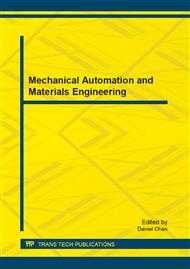p.275
p.280
p.285
p.290
p.294
p.299
p.304
p.309
p.314
GPC Control on Exhaust Gas in Regenerative Furnace Based on Feedforward of Hearth Temperature and Air Flow
Abstract:
Exhaust temperature is an important indicator in regenerative furnace with characteristics of nonlinearity, time-varying and large inertia. Also, it is affected by the hearth temperature and flow rate of combustion air, which makes it hard to be well controlled by traditional methods, such as PID and etc. In this paper, a strategy of generalized predictive control (GPC) integrated with feedforward of hearth temperature and air flow is presented to optimize the exhaust temperature control. Practices show that the control index is more stable and errors are obviously narrowed.
Info:
Periodical:
Pages:
294-298
Citation:
Online since:
August 2013
Authors:
Price:
Сopyright:
© 2013 Trans Tech Publications Ltd. All Rights Reserved
Share:
Citation:


